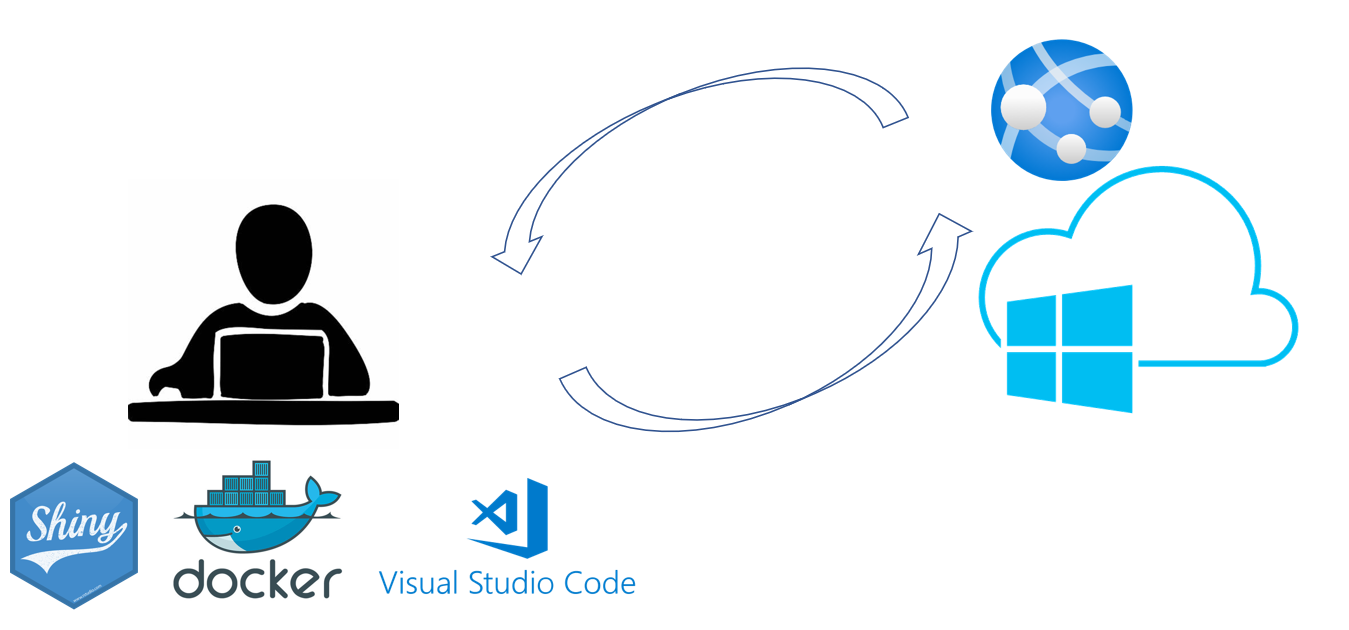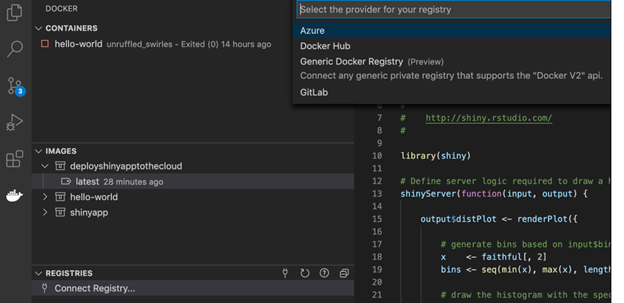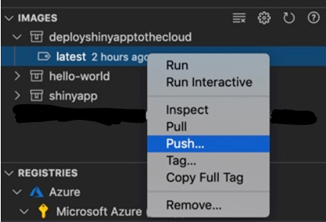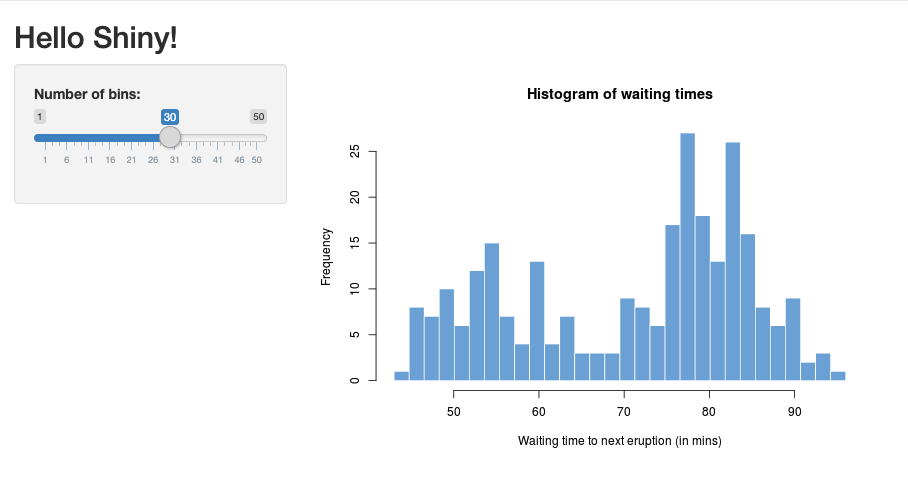Hosting R Shiny App Azure
Shiny on hosted RStudio Server. The Azure App Service enables you to build and host web apps without managing infrastructure.

Using Containers To Run R Shiny Workloads In Azure Part 4 Microsoft Industry Blogs United Kingdom
This allows us to focus on getting the RShiny app deployed without focusing too much on the backend.

Hosting r shiny app azure. It offers auto-scaling and high availability. This includes applications such as R powered APIs using OpenCPU or plumber Shiny apps batch R jobs that can scale horizontally over many CPUs or scheduled analysis. The R code for the Shiny App is leveraged from the article How to select the best performing linear regression for univariate models.
If you prefer for us to host your Shiny applications one of our shinyappsio plans is sure to work for you. If you want to deploy your Shiny apps you will therefore need to build your own Docker image for the app. See instructions for dockerizing a shiny app here.
Create an R notebook. Azure App Service enables you to build and host web apps and web services in any programming language without managing infrastructure. It offers auto-scaling and high availability.
Follow these steps to get started. In this case this will not be an option since the data is sensitive. I managed to make this work with a simple app but not with my own app.
Get your R code together. Share Shiny applications R Markdown reports dashboards plots APIs and more in one convenient place. Shiny is an R package available on CRAN used to build interactive R applications and dashboards.
UtsaVakani Here is a step by step process on how to setup shiny server on azure VM and here is a blog on MS R-server vs Shiny. An R installation with. You can use Shiny inside RStudio Server hosted on Azure Databricks clusters.
To get started with Shiny see the Shiny tutorials. It enables you to share Shiny applications R Markdown reports dashboards plots APIs and more in. Yes you can run shiny apps on Microsoft Azure.
How to deploy the Shiny App. The UI calls build_authorization_uri and then redirects your browser to that location. For those using R the R Studio Shiny server platform is commonly used to create web-available applications.
Ad Develop Your Next App with Your Azure Free Account - Start with 12 Months Free Services. All R packages the Shiny app depends on dependencies and. For Shiny applications consider Shiny Server.
What you gain is reliable flexible production ready R applications that will scale run on many cloud providers including Google and once set up easy to deploy - in most cases pushing to GitHub can be the trigger to serve your new. As such we can think of the App Service as a fully managed infrastructure platform. The first thing were going to do is to create a resource group to host everything.
My app does not have static data but retrieves data via APIs which I guessed was the reason a flexdashboard wont work correct me if Im wrong. Ad Develop Your Next App with Your Azure Free Account - Start with 12 Months Free Services. It offers features like auto-scaling and high availability supports Linux and Windows and enables automated deployments from any Git repo.
I have no experience in publishingdeploying shiny apps other than on shinyappsio. This allows us to focus on getting the RShiny app deployed without focussing too much on the backend. Use push-button publishing from the.
The Azure App Service enables you to build and host web apps without managing infrastructure. I think this video might also help you to deploy your shiny application in azure on a linux environment. Shiny is an R package available on CRAN used to build interactive R applications and dashboards.
Libraryshiny runExample01_hello When the app is ready the output includes the Shiny app URL as a clickable link which opens a new tab. A folder which contains the uiR and serverR for your Shiny app. Hosting the containerised Shiny apps on AWS EC2.
See Share Shiny app. See Share Shiny app URL. Once you have logged in Azure will return an authorization code as part of a redirect.
However one key challenge faced by many who have developed novel solutions in Shiny has been the issue of sharing the application with stakeholders on stable servers that allow for automatic scaling. You can interactively develop and test Shiny applications inside Azure Databricks R notebooks similarly to hosted RStudio. However in response to customer demand to be able to share many other forms of R- and Python-based content in addition to Shiny applications a few years ago we introduced a new product.
Such a Docker image will typically contain. Shiny Server allows you to take advantage of centralized computing resources and requires a Linux server that you will need to set up and maintain. RStudio Connect is a publishing platform for all the work your teams create in R and Python.
With our open-source Shiny Server software you can deploy Shiny applications to the web so that users need only a web browser and your applications URL. When you have logged in the server captures the authorization code and calls get_azure_token to. When youre ready RStudio Connect is a new publishing platform for all the work your teams create in R.
Create a Docker File for your Shiny application. You can also develop host and share Shiny applications directly from a Databricks notebook. Built by RStudio this package is highly integrated with the RStudio IDE making it the primary choice for production.
There is a couple of steps involved in order to deploy a Shiny app on Cloud Run. You can use Shiny inside RStudio Server hosted on Databricks clusters. Here is a skeleton Shiny app that demonstrates its use.
You can also develop host and share Shiny applications directly from an Azure Databricks notebook. As such we can think of the App Service as a fully managed infrastructure platform. R Shiny is a powerful tool for building data products from data visualisations to predictive models.
By the end of this blog youll be able to create your own RShiny container that pulls data from an Azure Postgres service and then access that container in a remote Azure deployment from a browser. End to end deployment of R Shiny in Azure using Docker Azure Container Registry and Azure Web Apps Also used Azure DSVM Linux box during this process.

Deploying Dockerized R Shiny Apps On Microsoft Azure The Quick Way By Dr Andreas Ochs Towards Data Science

Build Scalable R Shiny Apps With Azure And Docker By Joe Torres Medium

Build Scalable R Shiny Apps With Azure And Docker By Joe Torres Medium

Build Scalable R Shiny Apps With Azure And Docker By Joe Torres Medium

Getting Started With Rstudio Workbench Rstudio Server Pro Standard For Azure Rstudio Support

Shiny On Hosted Rstudio Server Azure Databricks Microsoft Docs

Using Rmysql From Ubuntu Coding Mysql Hosting

Shiny On Hosted Rstudio Server Azure Databricks Microsoft Docs

Shiny On Hosted Rstudio Server Azure Databricks Microsoft Docs
Tinkering With Azure Sql Databases And Shinyapps Io By Kelly O Briant Medium

Deploying Dockerized R Shiny Apps On Microsoft Azure Puresourcecode
Github Microsoft R Server Dotnet Visualizing Sql Azure Data In R This Is A Sample R Shinyapp Application Which Shows How To Query Data From A Sql Azure Database In The Microsoft Azure Cloud And Visualise That Data Which Contains

Hosting Rstudio Server On Azure R Bloggers

Using Containers To Run R Shiny Workloads In Azure Part 4 Microsoft Industry Blogs United Kingdom
Posting Komentar untuk "Hosting R Shiny App Azure"